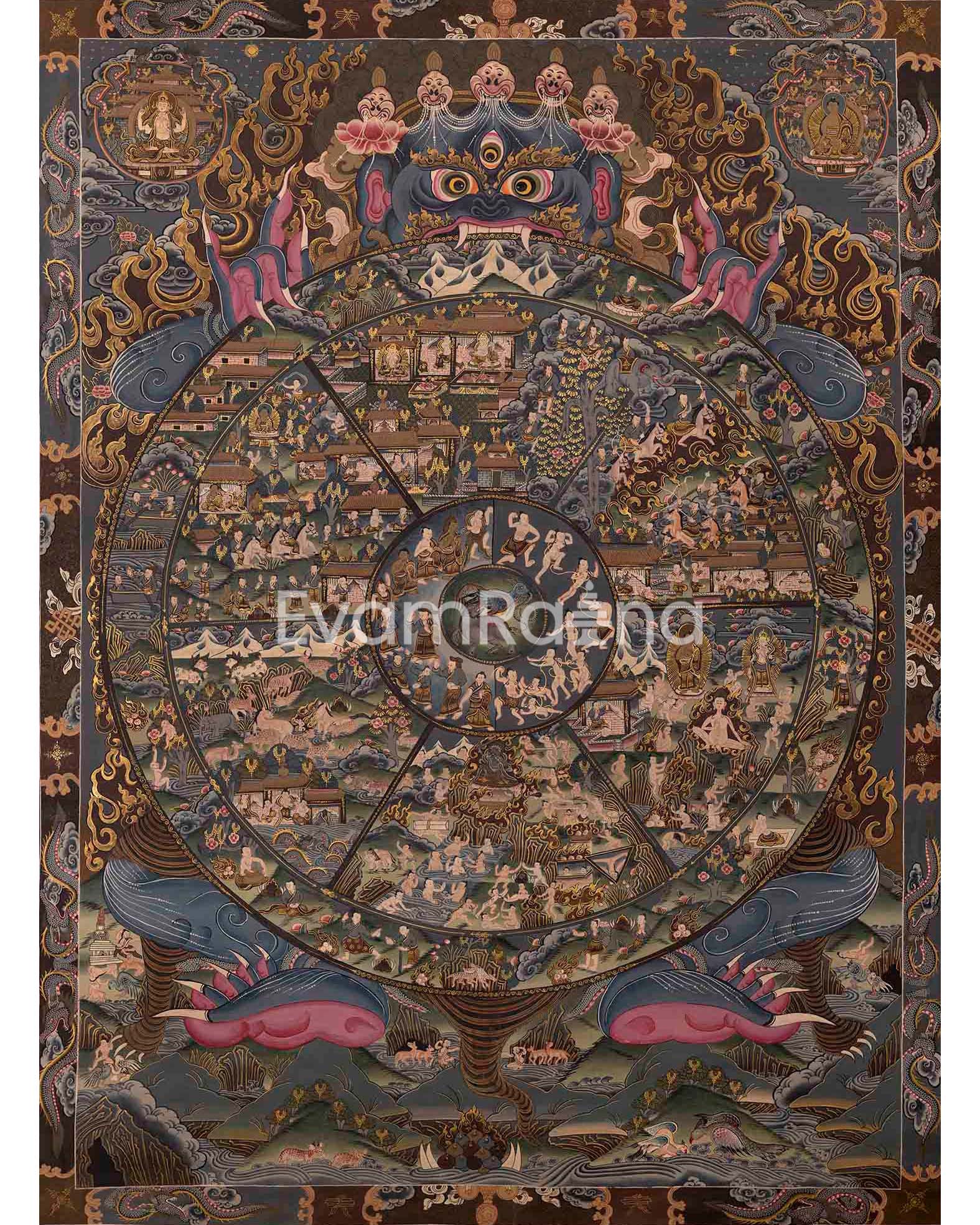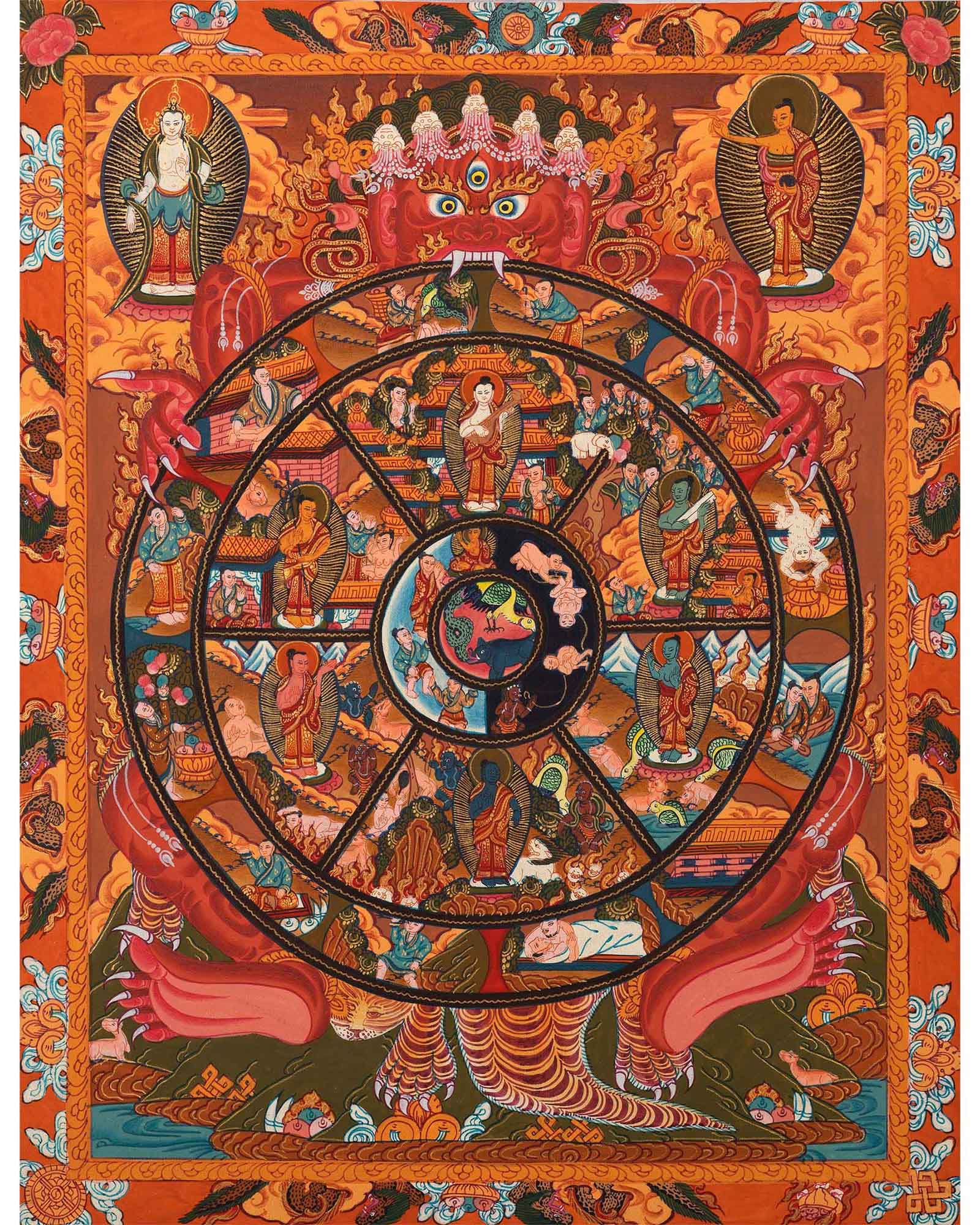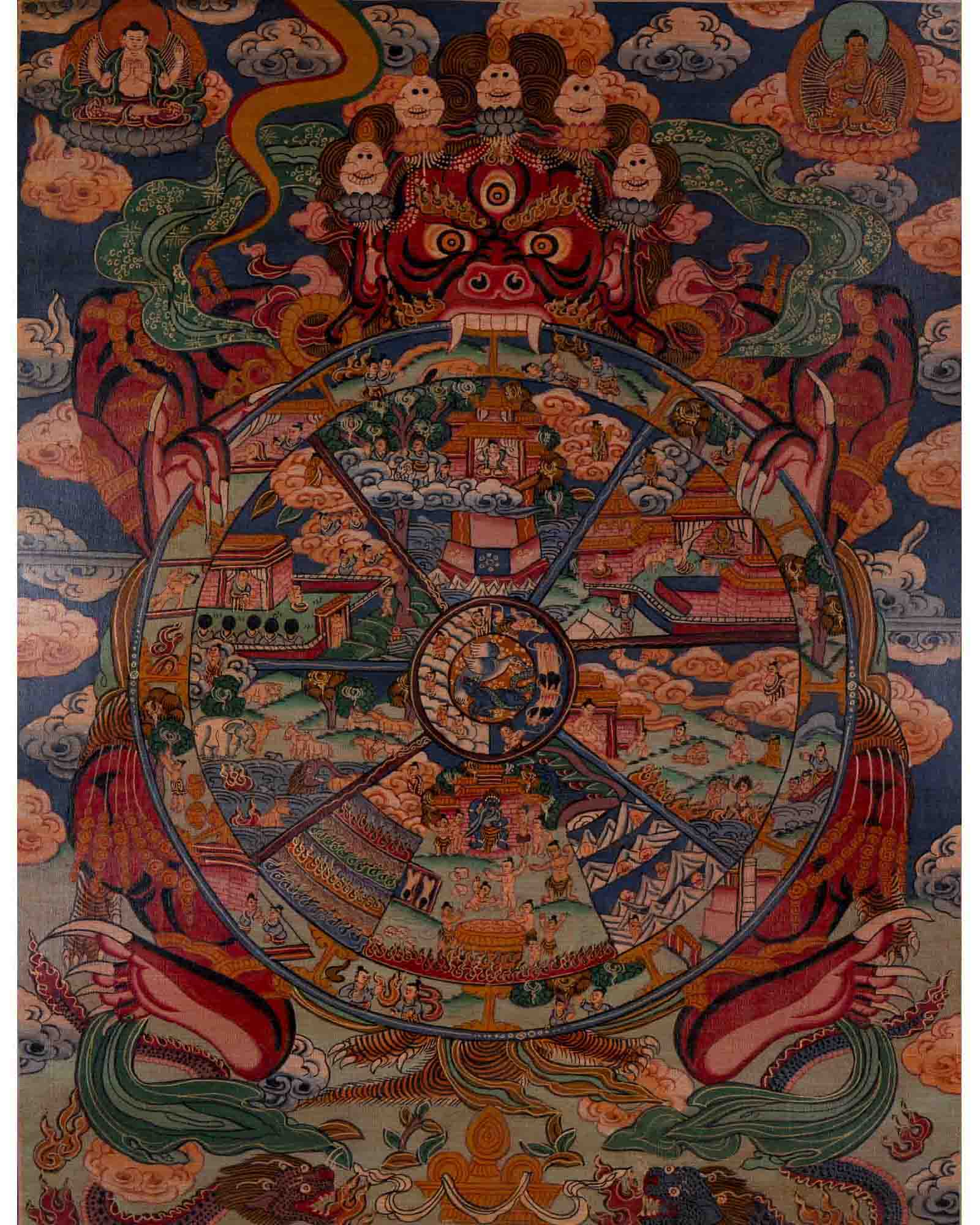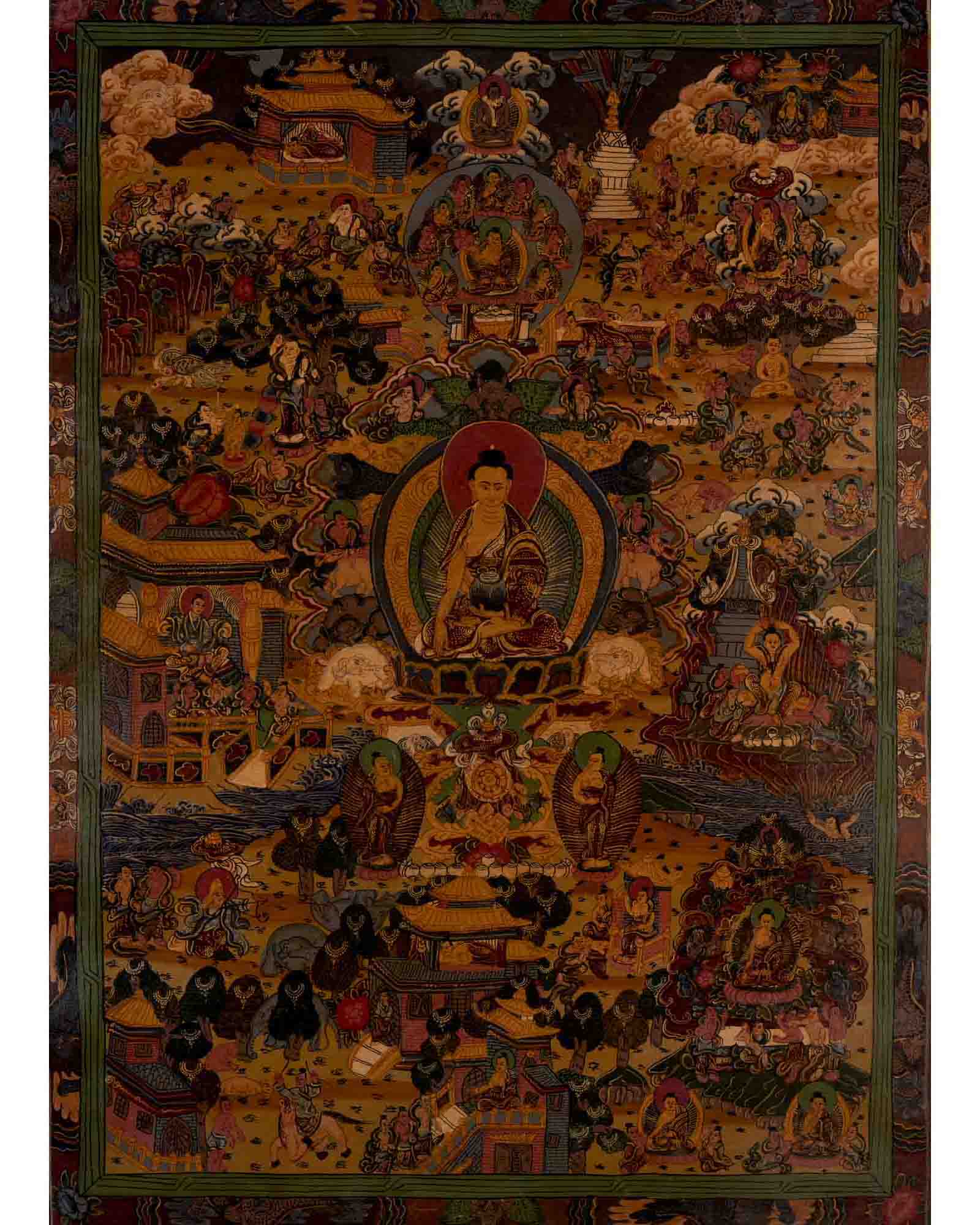Wheel of Life Thangka
37 products
Showing 1 - 24 of 37 products
The Wheel of Life: Depicting the Cycle of Samsara in Buddhist Art and Philosophy
Background & Significance
The Wheel of Life, also known as the Bhavachakra, is a powerful and intricate visual representation in Buddhism. It conveys the fundamental concept of samsara—the cycle of birth, death, and rebirth—and the path to enlightenment.
The Wheel of Life was initially practiced in the Theravada school of early Indian Buddhism. It developed into an essential component of Vajrayana and Mahayana Buddhism over time, especially in Tibetan Buddhism. Though the Wheel is portrayed differently in each of these religions, the basic idea is always the same.
It's is a visual representation of the Buddhist path and an essential teaching tool. In particular, it emphasizes the Four Noble Truths: the existence of suffering, its cause, its end, and the way to happiness. It highlights the never-ending cycle of birth, death, and rebirth, underscoring the cyclical aspect of life in samsara.
The Wheel's representation of the twelve links of dependent origination, which show how ignorance and the cycle of karma lead to misery, is among its most essential features. The Wheel reminds us that to escape this cycle, we must comprehend what causes suffering and how to find freedom.
Elements of the Wheel:
- The Center: Three animals, a pig for ignorance, a rooster for attachment, and a snake for aversion, are chasing each other in a circle at the center of the Wheel. In Buddhism, this stands for the fundamental causes of suffering.
- The Outer Rim: There are twelve portions around the center, each representing one of the twelve dependent origination relationships. These parts explain how sorrow and rebirth are caused by ignorance.
- The Second Ring: The gods, demigods, people, animals, ravenous ghosts, and creatures from hell are all depicted in this ring as the six domains of existence. It draws attention to the variety of experiences found inside samsara.
- The Third Ring: This ring stands for the karma law and the deeds that cause reincarnation in different realms.
- The Outermost Ring: The three jewels (Buddha, Dharma, and Sangha) and the three fires (ignorance, attachment, and aversion) are frequently depicted on the outermost ring. These stand for the way to emancipation.
Philosophical Insights:
The Wheel of Life provides deep insights into philosophy. It serves as an example of the transience of existence, the suffering that is a part of samsara, and the significance of comprehending the causes of suffering. It communicates that escape from the cycle of karma and reincarnation is possible through the Eightfold Path.
In conclusion, the Wheel of Life, which summarizes the core ideas of Buddhism, is an important teaching tool. It challenges practitioners to go beyond suffering and achieve enlightenment by intellectually and artistically illustrating the cycle of samsara and the way to liberation. Its ageless symbolism serves as a powerful reminder of both the transience of existence and the need to follow the Buddhist path to escape the never-ending round of the Wheel.
























